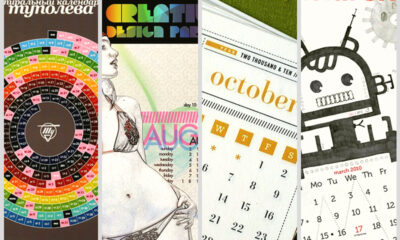The holiday countdown feels more magical with an Advent calendar. Each day in December brings a small surprise that builds excitement for Christmas. But how do Advent calendars work, and why have they become such a beloved tradition?
At their core, these calendars mark the days leading up to Christmas Eve, turning an ordinary countdown into something festive and joyful.
What began as a simple way to mark the days before Christmas grew into one of the most beloved traditions of the season.
The official Advent calendar history can be traced to Germany in the 1800s. Families created simple countdowns to prepare for Christmas, often by making chalk marks on doors or lighting a candle each day.
These small acts of anticipation laid the foundation for the printed versions that appeared later. By the early 20th century, German publishers had begun producing paper calendars with little doors that revealed pictures or Bible verses, giving the tradition its recognizable form.
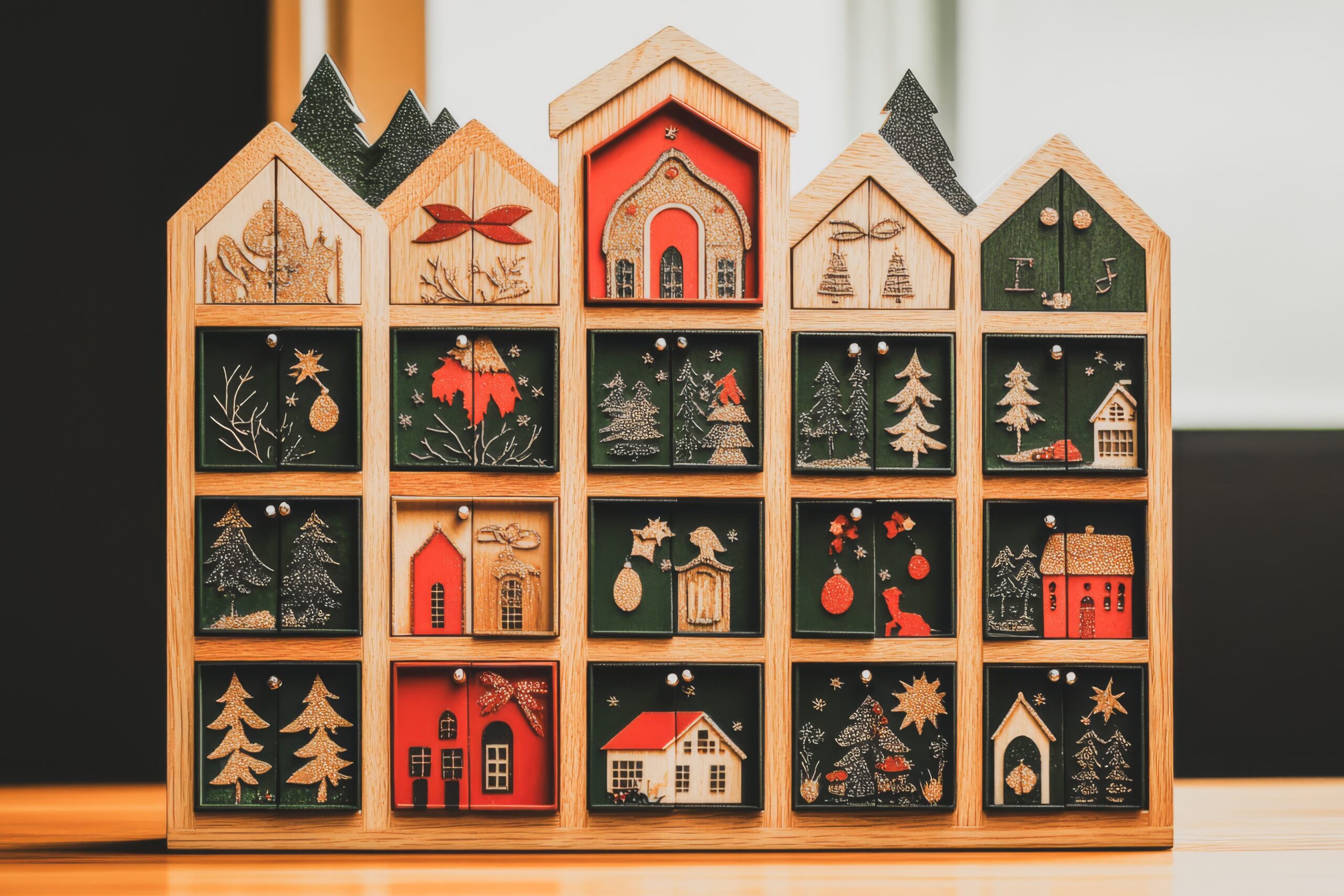
By the mid-20th century, many included chocolates, trinkets, or colorful images behind each window. Families began to treat them not only as a religious practice but also as a festive tradition that children eagerly awaited each December.
The popularity of Advent calendars soon spread beyond Germany. By the 1950s, they had gained attention in the United States and the United Kingdom, appearing in shops and quickly becoming part of the seasonal market.
How Do Advent Calendars Work Today?
Advent calendars have come a long way from their earliest forms, but the heart of this holiday countdown tradition remains the same. Most Advent calendars start on December 1st and end on December 24th.
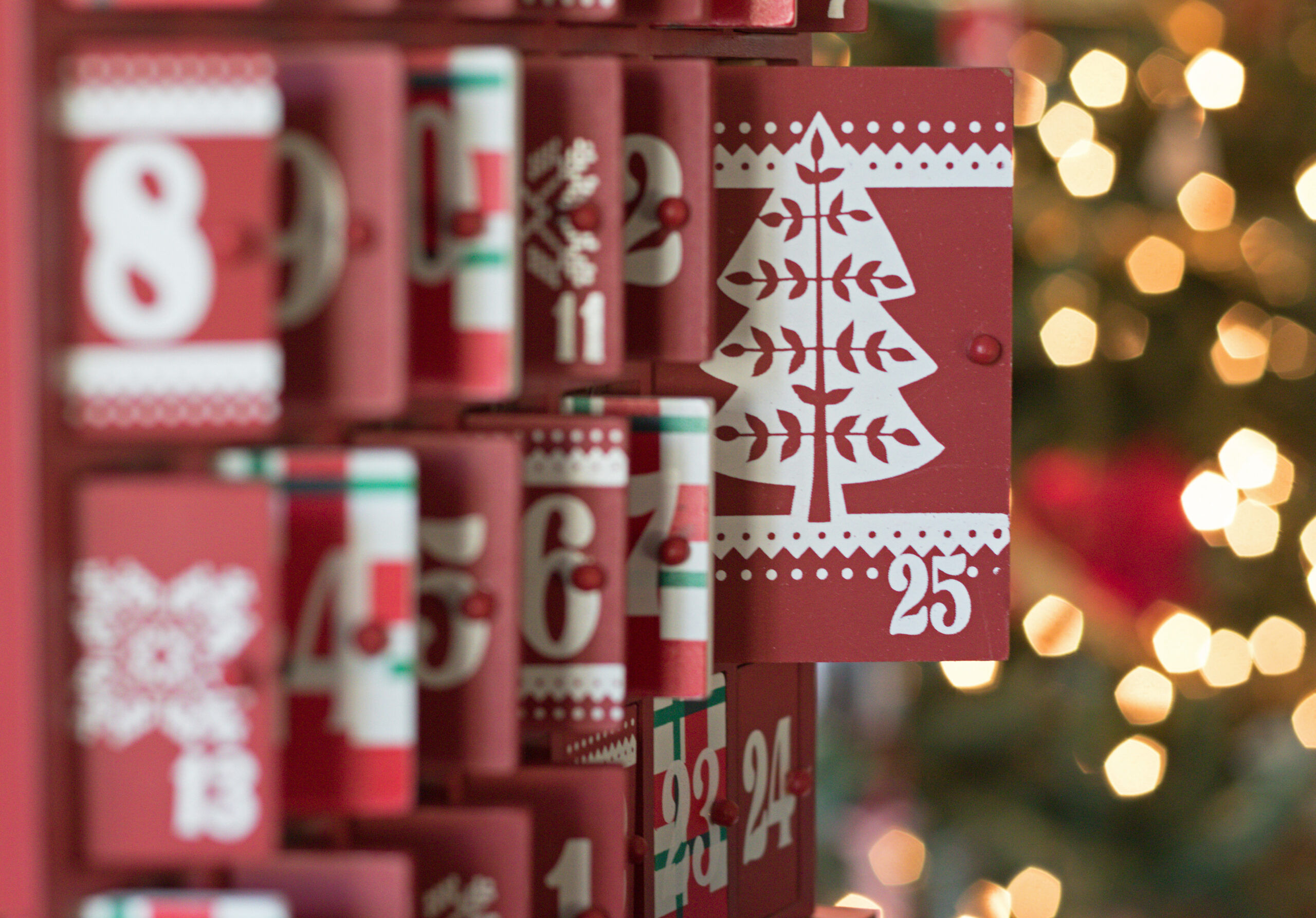
What is the correct way to do an Advent calendar? Each day, a door, pocket, or box is opened to reveal a small surprise.
For families, it’s a way to make the season feel special beyond the single holiday. For children, it’s often the highlight of their morning, a small ritual that grows into a bigger sense of anticipation as Christmas Eve approaches.
Traditional paper calendars with simple images still exist, often featuring snowy scenes or nativity art. Chocolate-filled versions are some of the most popular, with a sweet treat waiting behind each door. Toy calendars add a playful element, offering small figures, puzzles, or collectibles. These different types of Christmas countdown calendars ensure there’s an option for every family’s style and budget.
Digital versions even allow people to enjoy countdowns online, sometimes with interactive games or daily messages.
Modern Twists
While the basics remain the same, newer versions reflect modern interests. Luxury brands create Advent calendars filled with perfume, gourmet food, or beauty products. Many families now design their own, using printable templates or crafting calendars by hand.
Businesses have also embraced the tradition by creating branded versions that feature promotional items or themed gifts. For those who want something unique, custom printing options allow people to design calendars that match their style.
Luxury brands create Advent calendars filled with perfume, gourmet food, or beauty products.
Festive Surprises and Gift Ideas for Advent Calendars
Part of the charm of Advent calendars comes from what’s hidden inside. Many are filled with chocolates or candies, and these remain popular because they offer a quick treat that everyone enjoys.
Some families choose to include small toys or puzzles for children, while others may add stationery, stickers, or even art supplies. For adults, calendars might feature beauty samples, teas, or self-care items. These festive calendar surprises turn each morning into a moment to look forward to, no matter the age of the person opening them.
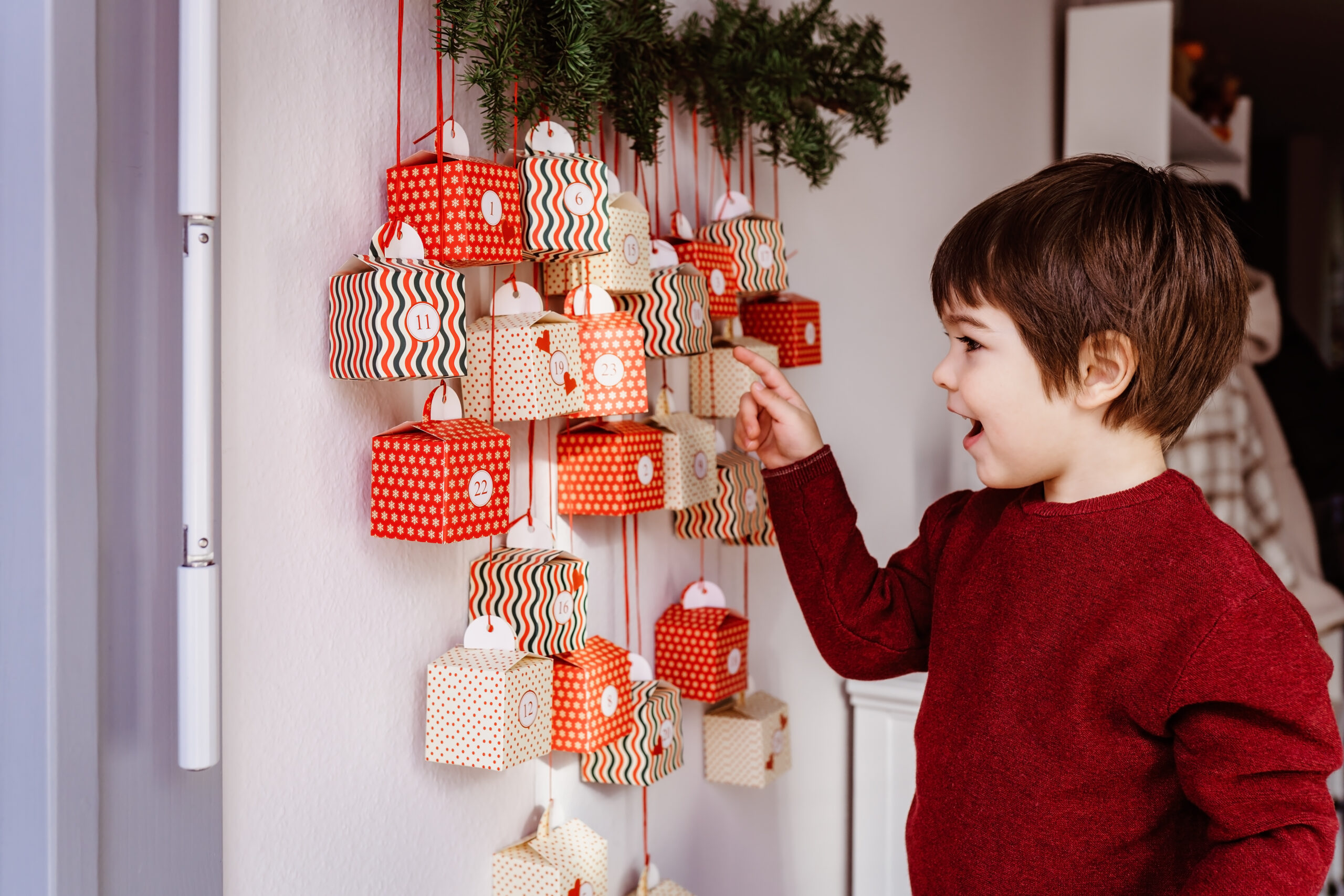
DIY and Personalized Options
Parents often create calendars filled with Advent gift ideas that match their children’s interests, such as small books, craft kits, or sports items. Others design calendars for partners or friends with personal notes, favorite snacks, or inside jokes.
Family and Office Traditions
Advent calendars are not limited to home use. Many workplaces use them as a way to celebrate the season together, filling them with small treats or tokens for staff to enjoy. Families often gather in the morning or evening to open the day’s surprise, turning it into a bonding activity that keeps everyone involved.
The Meaning & Joy Behind the Countdown
The daily act of opening an Advent calendar reflects the excitement of waiting for something important. The countdown teaches patience while offering a reward that keeps spirits high through the month of December. This symbolism of anticipation is what makes the tradition meaningful across cultures and generations.
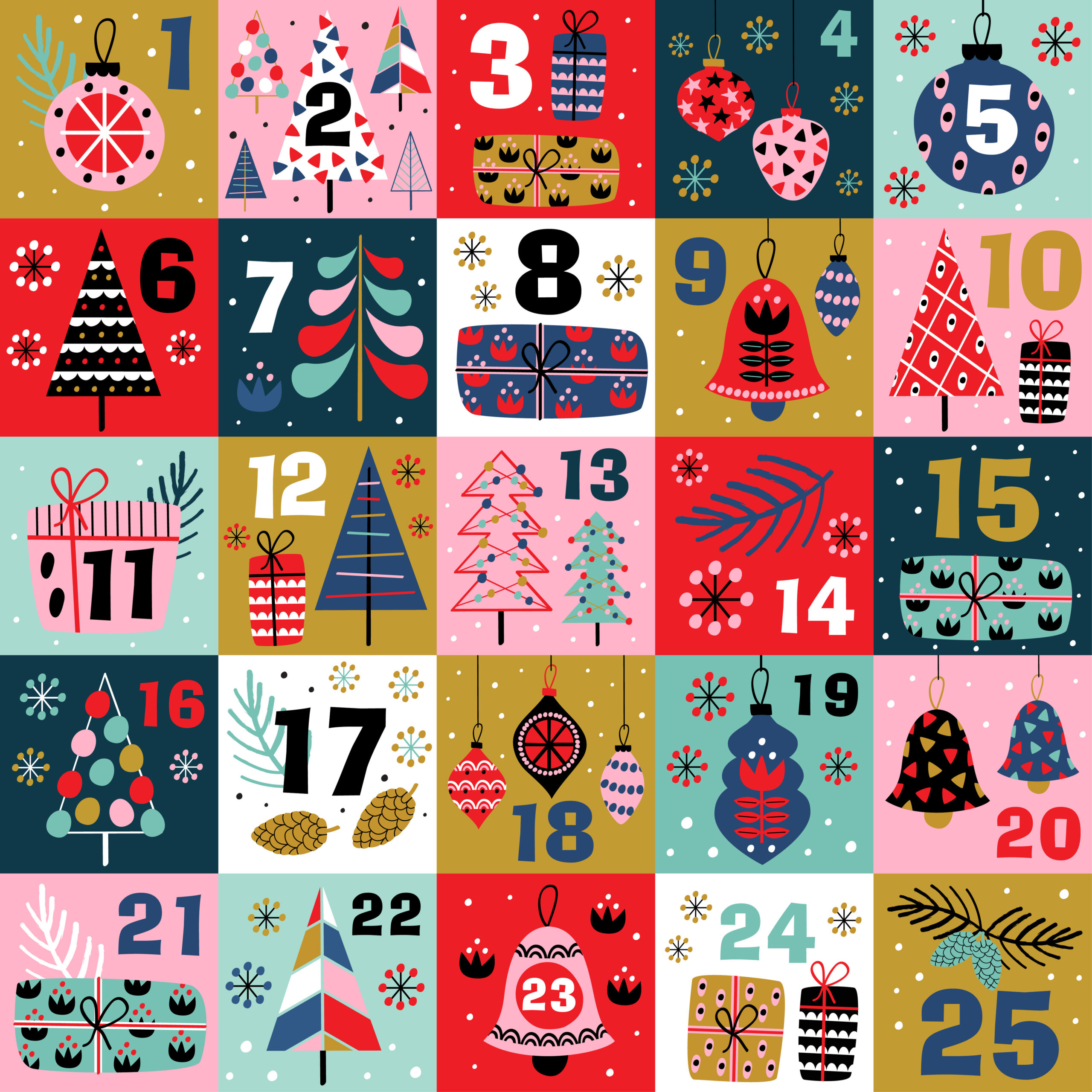
Opening an Advent calendar isn’t just about the surprise itself. It’s often done together, whether around the breakfast table at home or during a holiday gathering at work.
Families create routines where children rush to find the day’s treat, and coworkers laugh together over shared surprises.
For many, Advent calendars are tied to childhood memories of excitement and wonder.
frequently asked questions
Most modern calendars begin on December 1st and end on December 24th, but some traditional versions start on the fourth Sunday of Advent. Since the date of that Sunday changes each year, those calendars vary in length, sometimes including only 22 or 23 days.
Beyond chocolate and toys, many people include small books, handmade ornaments, recipes, or even acts of kindness written on slips of paper. These creative options make the countdown more personal and often more meaningful.
Yes, many communities and companies adapt the format for other celebrations or events. Birthday countdowns, wedding countdowns, or even product launches sometimes borrow the daily reveal concept to build excitement and engagement.
They don’t have to be. Simple envelopes, paper bags, or jars can serve as containers. Filling them with handwritten notes or homemade treats keeps costs low while still creating a festive tradition.
A Great Holiday Countdown Tradition
This holiday season, the tradition of the Advent calendar continues to connect us to both its rich history and the simple joy of anticipation. By offering daily festive surprises and strengthening bonds between family and friends, these calendars remain a cherished part of the Christmas countdown.
Since 2005, UPrinting has helped families and businesses create their own holiday magic with high-quality, custom printing.
Ready to design a unique holiday celebration? Explore custom Advent calendar printing with UPrinting today!

